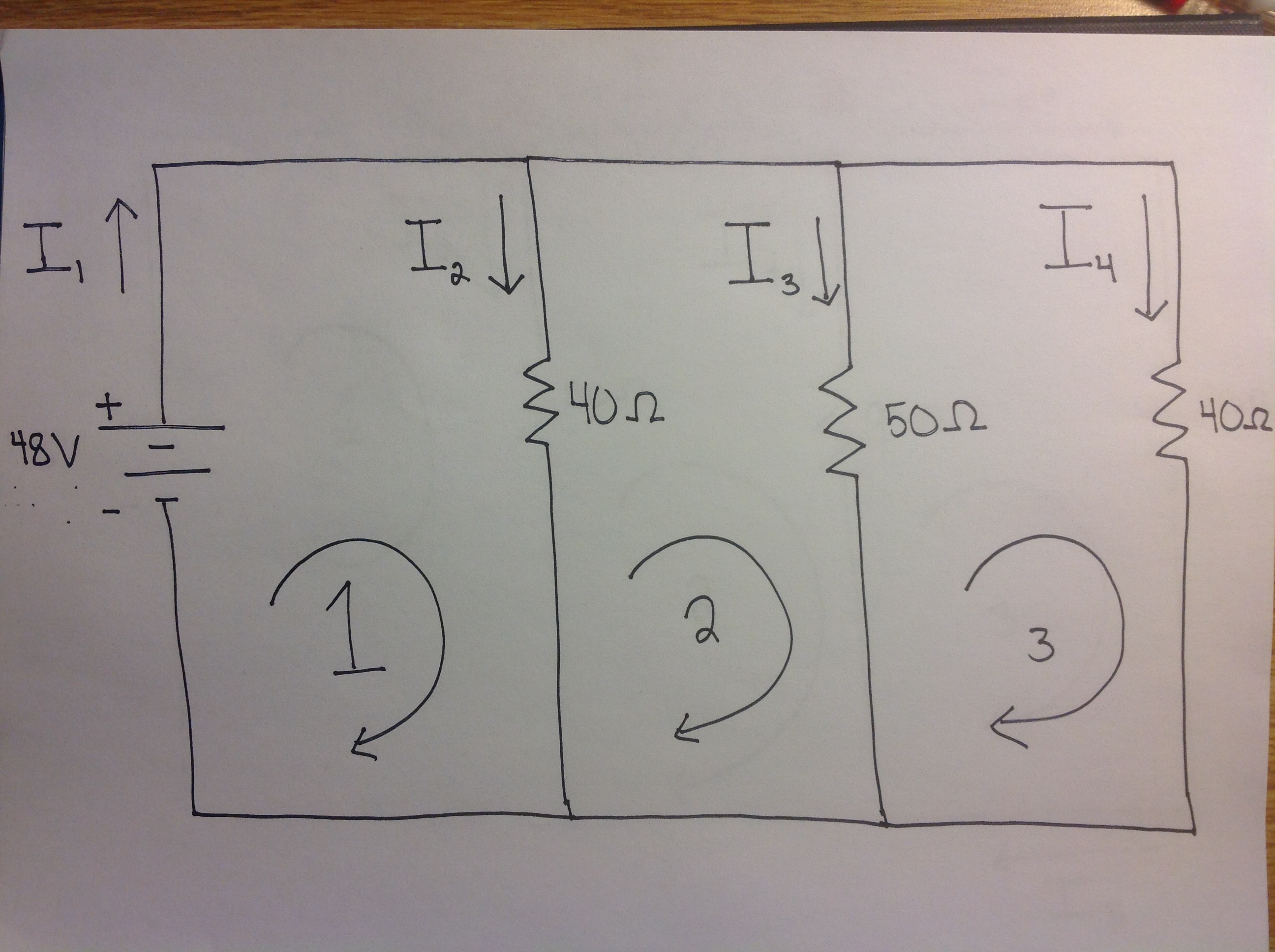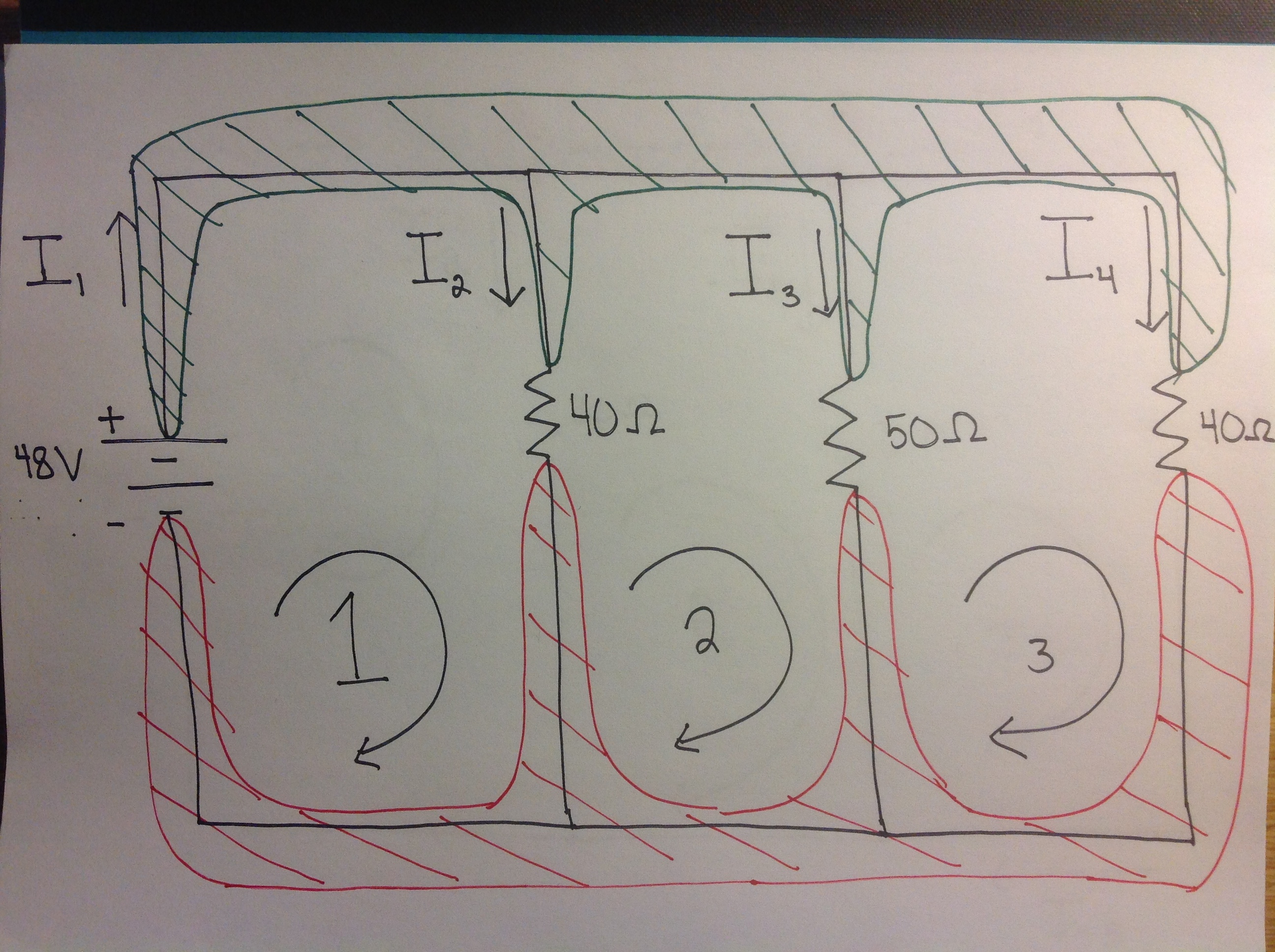In Parallel, some useful properties to remember are:
1. Voltage is always constant and the only thing changing is current
2. The total resistance in a parallel circuit is:
1/R(total)=(1/R1+1/R2+.....1/Rn)^(-1)
3. Solving the circuit using Ohm's Law
Voltage = Current * Resistance, (V=I*R, R=V/I, I=V/R )
4. Solving the circuit using Krichhoff's law
The Junction/Node rule states that the current going into a wire equals the current going out the wire. This rule is basically the conservation of electrons.
Current in = Current out
The loop rule states that the sum of the voltage in a closed circuit is zero.
Voltage of the battery = The sum of all the voltages.
5. To find out how much power is dissipated from a resistor you can use
the Power equations.
Power=Current*Voltage , (P=I*V, P= (V^2)/R, P=I^2*R )
Example Of A Parallel Circuit Calculation

Photo Provided By Kevin Chang
Above we have 3 light bulbs that are in parallel with each other.
A good approach to solving this circuit is by labeling all the known and unknown values.
Known Values: Unknown Values:
Battery= 48 V Current 1=?
Resistor 1= 40 (Ω) Current 2=?
Resistor 2= 50 (Ω) Current 3=?
Resistor 3= 40 (Ω) Current 4=?
After labeling all the known and unknowns, we can then refer to properties of a parallel circuit. This tells us that the voltage across each resistor is equal to 48 volts.
That would mean that Resistor 1, Resistor 2, and Resistor 3 will have 48 volts across them.
Using Ohm's Law we can then calculate the current passing though each resistor by individually calculating the resistor's current.
Using the equation I=V/R
Answer:
Current 2= 1.2 amps
Current 3= .96apms
Current 4= 1.2 amps
To find the current 1 we would have to apply Kirchhoff's Law:
The current going in a Junction or a node is equal to the current going out.
A junction is 2 wires that are joined together.
A Node is 2 or or more wires that are joined together.
In this example I have outlined and dashed the node on top and bottom of the circuit. Looking at the Green dashed node we have Current 1 going into the node and Current 2, 3 and 4 going out the node. This can be confirmed by looking at the direction of the assumed current. This assumes current for the circuit is in a clock wise motion (CW).
With this rule we can then set, Current In = Current Out.
This will give us Current 1= Current 2 + Current 3 + Current 4
Answer:
Current 1= 3.36 Amps
After using Ohm's Law and Kirchhoff's Law, you may use the Power equation to figure of the power dissipation of the resistor, if needed.

Photo Provided By Kevin Chang
After solving a parallel circuit we now have a
better understanding of this type of electrical circuit.
The PROS and CONS In Parallel Circuits
Pros:
1. More devices can be added into the circuit and it does not decrease the net current. This means that adding more lights won't make them dimmer.
2. If one device breaks, the other devices won't stop working
Cons:
1. Current is not constant through the circuit. This means that energy is used up quicker and so the current increases. Thus, the electrons move through the circuit more rapidly and causes the wires to heat up and even cause a fire.
The PROS and CONS In Parallel Circuits
Pros:
1. More devices can be added into the circuit and it does not decrease the net current. This means that adding more lights won't make them dimmer.
2. If one device breaks, the other devices won't stop working
Cons:
1. Current is not constant through the circuit. This means that energy is used up quicker and so the current increases. Thus, the electrons move through the circuit more rapidly and causes the wires to heat up and even cause a fire.